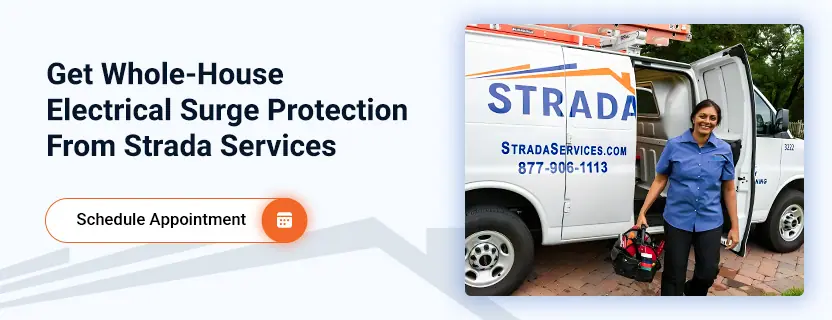In the past several years, Tennessee has ranked high compared to other states in its lightning counts, averaging over 100 counts per square mile. When lightning strikes, it causes power surges that may damage the electrical components in your home. Power surges may also have internal causes, such as from appliances.
With large and small surges coming from various sources, homeowners should consider investing in whole-house surge protection. These systems help protect against multiple types of power surges, allowing you to keep electronics in your home safe.
Power surges can be large or small, depending on the source of the excess voltage. Internal surges come from components of your electrical system, like air conditioning units or other appliances. External surges come from sources outside your home, like power lines. Both types of surges cause slow deterioration of electrical systems, though external surges often cause more severe damage. Here are a few causes of power surges:
With surges coming from various sources, you should protect your home using surge protection. You might use wall plugins to preserve a single outlet but Service Entrance Rated whole-house surge protection devices (SPDs) often provide the highest level of defense.
These devices connect to a home’s electrical service panels. When surges occur, the suppress power from your home devices to protect them. SPDs work better than point-of-use surge protectors because they can help shunt power from large, external sources like lightning strikes. They also last for years rather than for a single use. Here are a few benefits of adding electrical panel surge protection in Nashville or other Tennessee cities.
Most electronic gadgets and electrical equipment have circuit boards. With the rise of more devices like computers, tablets and smartphones, homes have an increased need for protection. Even LED lights today often have circuit boards that might break down during a power surge. Rather than protecting each outlet, a whole-house system provides safety for your complete electrical system.
While external surges are the most destructive, internal power surges cause minor damages over time. These surges may come from home appliances like motors or air conditioners. The effects of multiple small surges add up, degrading the performance of electronics and shortening their life spans.
Many homeowners have surge protection at the point of use, especially for valuable electronic setups like a computer system. Point-of-use surge protection, like wall plugins, is intended to serve as the last defense against power surges. Provide the first line of defense with a whole-house surge protector. With multiple layers of surge protection, you reduce the chances that surges will damage your electronics.
Even the most prepared homeowners likely have surge protection on only a few outlets. Whole-house surge protection does more than protect one outlet or appliance. It helps shields the whole home from excess energy.
Whole-house surge protection provides various benefits for homeowners. When choosing a protection option, you can follow a few steps to ensure you get the right one for your home:
While you wait for a qualified electrician to come and install your whole-house surge protector, you can take the following steps to protect your home during electrical storms:
Strada Electric, Security, Air Conditioning & Heating is a fully licensed and certified electrical company with highly trained technicians. We install and maintain whole-house surge protection for electrical panels in Tennessee and other Southern states. Protect your home against power surges by setting up a visit from our team.
